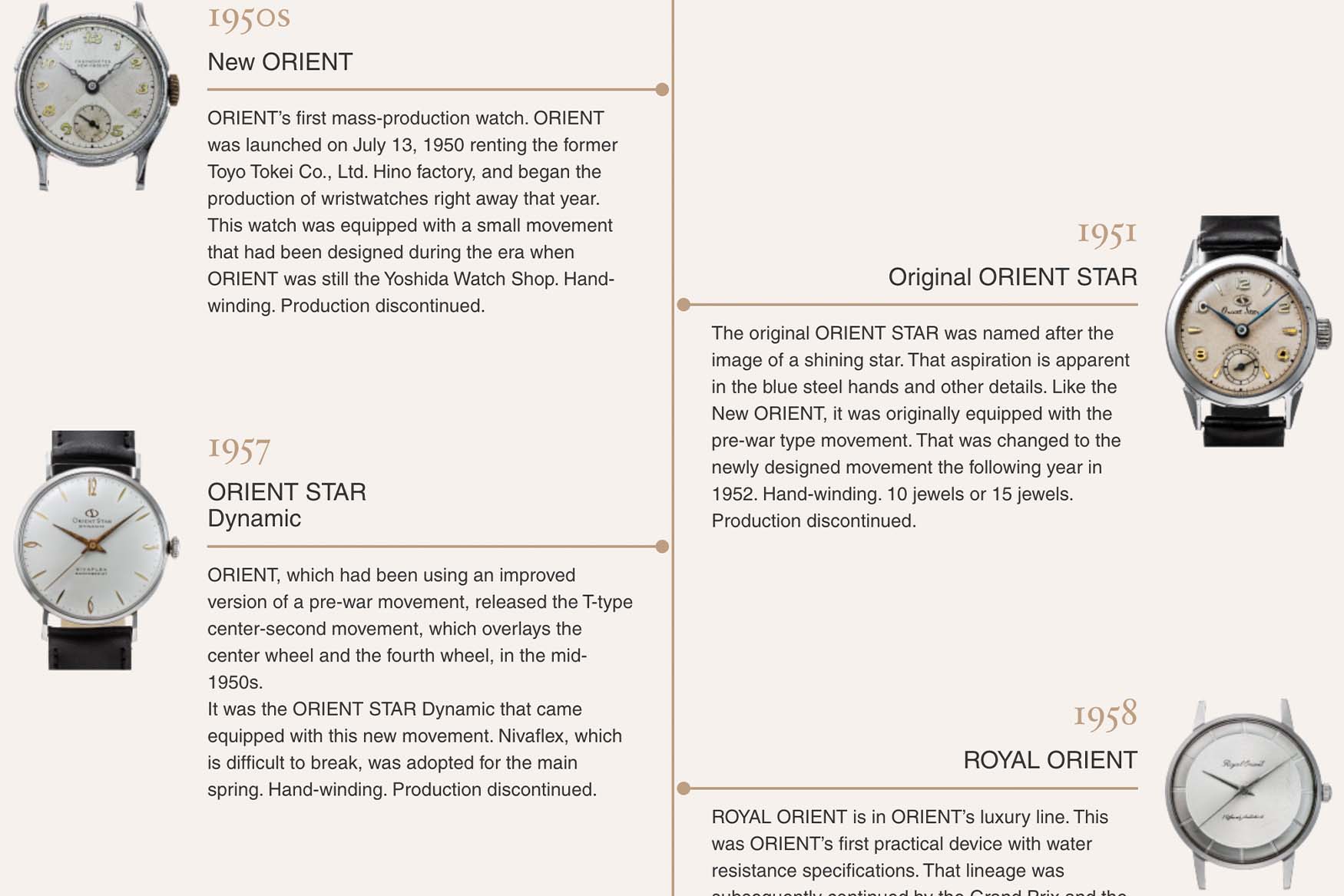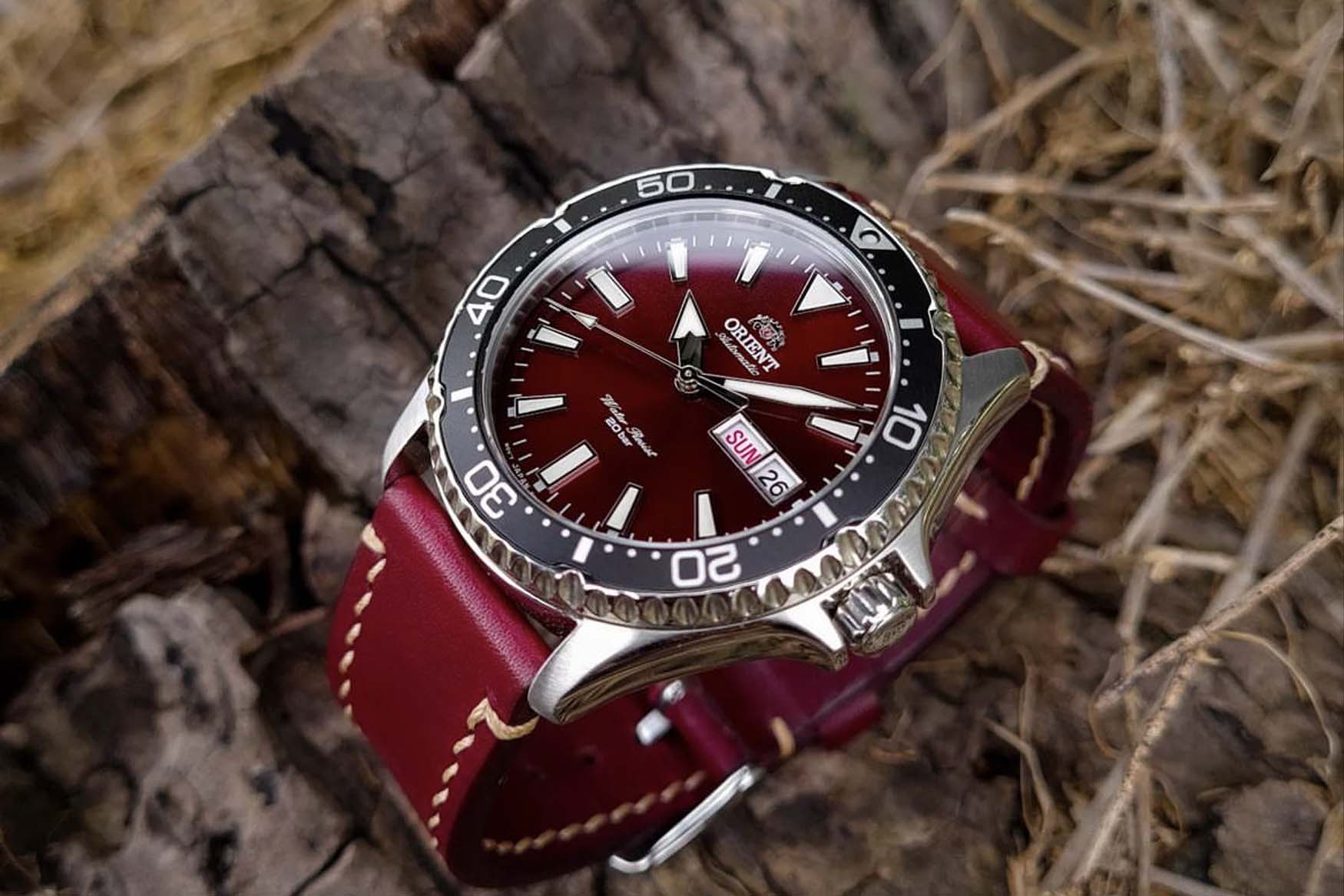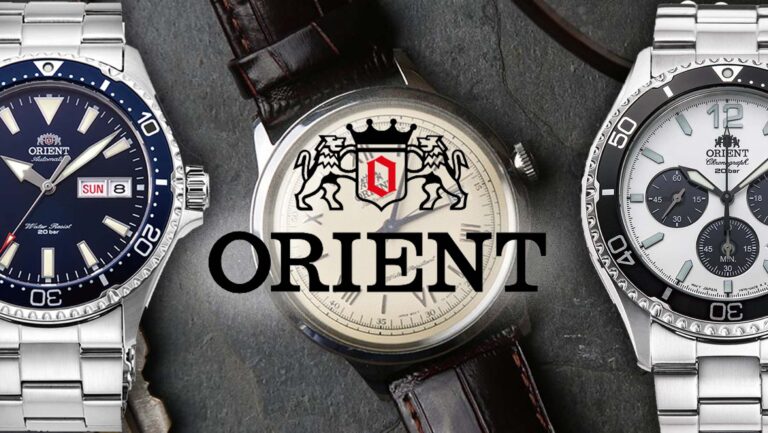Buffy Acacia
A fun retro design Great value for moneyOrient is one of the most underrated brands by the general public, despite its excellent quality and legitimate heritage of fine watchmaking. Word may be spreading among watch enthusiasts about these great Japanese-made bargains, but how much do you actually know about Orient? Is it really a separate division of Seiko?or is it its own brand? The answer is actually both and neither.

The company’s roots date back to Yoshida Watch Shop, a watch importer and wholesaler founded in 1901. Gradually expanding into the manufacture of gold cases, the company began producing wristwatches in 1934. In 1936, it opened a factory in Hino, Tokyo, but closed after World War II. The factory reopened in 1950, and in 1951, the company changed its name to Orient Watch Co., Ltd., the name by which it is known today. It was also around this time that the flagship model, Orient Star, was first released.

The 60s and 70s were a golden period for Orient, with many hit products, including the record-breaking Finesse Ultramatic in 1967, the thinnest automatic watch with date display. The 2000s brought big changes, with Seiko Epson becoming a 52% shareholder in 2001, marking a major turning point in the luxury watch sector. Seiko Epson, one of the three companies that make up the Seiko Group, is: Responsible for manufacturing Grand Seiko The three companies in the Seiko Group (Seiko Group Corporation, Seiko Instruments Inc., and Seiko Epson) are run as completely separate companies, but they sometimes help each other out.

The Orient Technical Center was built in Ugo-machi, Akita Prefecture, and the Royal Orient series, featuring in-house chronometer-level movements, was prioritized as an equivalent to Grand Seiko. However, production was eventually discontinued to avoid excessive internal competition. In 2009, Seiko Epson made Orient a wholly owned subsidiary, and since then Orient has been effectively dormant, with various Epson divisions responsible for the manufacture and sale of Orient-branded watches. Orient now focuses almost exclusively on its cost-performance series. The more popular Seiko is slowly moving upmarketLet’s take a closer look at some of the featured products in the catalogue.
Orient Bambino (Classic Collection)

Perhaps our top pick for a budget-friendly dress watch, the Orient Bambino has been a staple since its launch in 2012. There are many different models to choose from, including dial layouts, case sizes, and functionality, but the most important aspect is always there: the Bambino is always classy, reliable, and looks much more expensive than it actually is. These watches haven’t actually been officially called Bambino for years, and are part of the Classic collection, but the nickname has stuck perfectly. Overall, there are now countless references, but the best-selling ones are those with mechanical movements in 40.5mm or 38mm cases.

As a case study, the 38mm version with the small seconds subdial is a stunning example. While the smaller case size is a relatively new addition to the collection, the domed cream dial and blued hands are a Bambino staple. The Roman numerals are Overall a sophisticated feelThe precise minute track demonstrates meticulous attention to detail, the date display ensures everyday practicality, and the in-house automatic caliber F6222 beats at a frequency of 21,600vph and offers a power reserve of 40 hours.
Oriental Barracuda (aka Mako III)

For everyone Lamenting the End of Seiko SKX Production When it comes to dive watches, there are hundreds of Orient Kamas Divers waiting to be purchased. Orient’s official naming system makes it hard to tell, but these watches can be considered Kamas or Mako III. They’re part of the Sports collection, and back that up with both their technical performance and the vibrantly colored dials. They’re water resistant to 200 meters, more than enough for recreational scuba diving, and the screw-down crown adds an extra layer of security. The sapphire crystal is scratch resistant, so finding a professional dive watch at this price can be difficult.

With a diameter of 41.8mm and a lug-to-lug length of 46.8mm, it sits comfortably on even the slimmest wrists. The thickness of 12.8mm is also not bad considering the automatic caliber F6922 has a day/date function. It also has a 40-hour power reserve with a frequency of 21,600vph, hacking function, manual winding, and a quickset calendar. Given the low price and extensive specification list, it’s easy to see why this watch is a popular alternative to the late Seiko SKX. If you don’t like the sharp look, the Orient Ray II and Mako II are more rounded, but the specs are very similar.
Orient Neo Classic

Another diver in Orient’s Sports collection, this one is a neo-classic based on the 1970s King Diver. Even if you didn’t know it, you’d guess from the obvious ’70s vibe. All the minute markers are pure blocks, with a big slab of orange for the first 15 minutes of the internal timing bezel, operated by the crown at 4 o’clock. This orange is accentuated again by the wedge-shaped applied indexes, and the funky concave bracelet gives it the vibe of a mint-condition watch you’d find on eBay.

The cushion case is quite thick at 43.5mm wide, but at just 46mm lug-to-lug, it’s still pretty compact on the wrist. This model doesn’t have a sapphire crystal, but it’s powered by the same caliber F6922 as the Kamasu/Mako III and is water resistant to 200 meters. There’s a simple stainless steel model with a black and orange dial, as well as a rose-toned bronze PVD version and a limited edition in black and blue.
Orient Pilot

Measuring 42.5mm in diameter and 49.5mm lug-to-lug, the Orient Pilot really embodies the spirit of the Type B pilot watches of old. The reference RA-AC0H02N is particularly attractive, with a black PVD coating and grained dial finish that gives it the perfect military feel. It’s also surprisingly slim at just 11.6mm in height, especially considering it’s waterproof to 100 meters, so you can swim in it too. It’s a bit of a shame it uses mineral glass, but at least the caliber F6722 is solid with the same 40-hour power reserve and 21,600vph frequency.
Orient Mako Chrono Solar

In the spec monster catalog, the Orient Mako Chrono Solar is quite the eye-opener: for just a few hundred dollars, you get a solar-powered chronograph with the reliability of a dive watch. Beautiful panda dialThe movement is a Seiko VS75, with minutes at 6 o’clock, seconds at 9 o’clock, 24-hour display at 3 o’clock, and a date window at 4:30. Not having to wind is a big advantage of a quartz watch, but not having to change batteries is even better. With a diameter of 42.5mm and a measurement of 47.9mm from lug to lug, it’s a great size for average wrists who like a watch with a bit more presence. It also comes in black and Pepsi, making it a great choice for those who don’t like black on white.
Orient Star Heritage Gothic

Orient Star is generally considered to be a bit better than regular Orient in terms of quality and price, but many of the designs tend to be a bit out of reach for most watch enthusiasts. There’s an emphasis on open-heart dials that reveal the escapement, which can be very exciting for new enthusiasts, but can also seem a bit tacky. That’s not the case with the Orient Star Heritage Gothic from the Classic Collection, however. It draws retro inspiration from its 1950s roots to add a contemporary touch to a clean, beautiful timepiece.


The Arabic numerals on the dial are A bit like the IWC Portuguese or Nomos’s Bauhaus vibeThe 38.7mm case is a great compromise between vintage and modern tastes. There is a power reserve indicator below the 12 o’clock position, indicating the 50-hour power reserve of the caliber F6G42, and a small seconds subdial, which always looks classy. This model has a sapphire crystal front and a mineral glass display case back.
